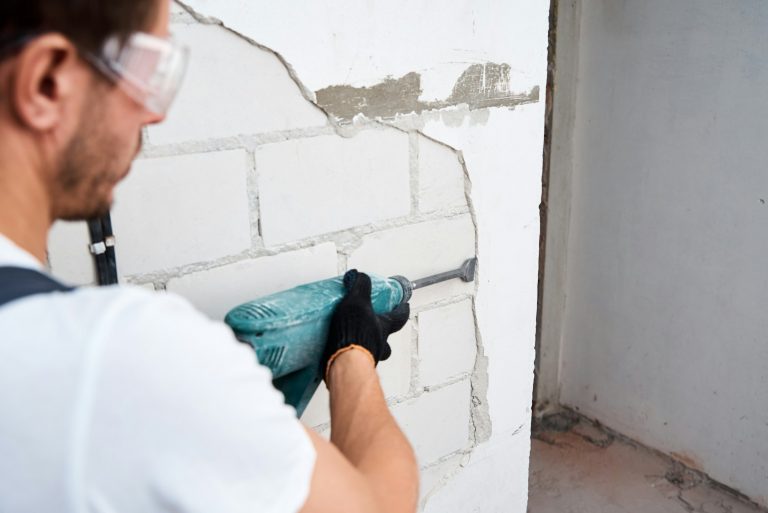Stucco, a commonly used exterior surface material, can develop issues with time. For homeowners and property managers, grasping the stucco removal process is vital to safeguard the structural integrity of their buildings. This article offers a comprehensive insight into stucco removal, addressing causes of stucco problems, the removal process, signs necessitating removal, complexities across various surfaces, and cost-influencing factors.
Causes of Stucco Problems
Stucco problems often stem from poor installation practices, exacerbated by factors such as inadequate drying time and weather damage. Insufficient curing time leaves stucco vulnerable to cracks, moisture intrusion, and mold growth, ultimately compromising the building’s structural integrity and necessitating costly repairs.
Inadequate mixing of stucco materials or improper application techniques can also contribute to problems. Incorrect proportions of cement, lime, sand, and water may hinder proper adhesion to the substrate, increasing the risk of cracks and detachment. Additionally, application errors like uneven thickness or inadequate surface preparation create weak points susceptible to moisture infiltration and subsequent damage.
Moreover, weather-related elements significantly impact stucco deterioration. Exposure to extreme temperatures, moisture, and freeze-thaw cycles causes stucco to expand, contract, and degrade over time. Regions with high humidity or frequent rainfall are particularly prone to moisture infiltration, leading to efflorescence—a white powdery residue formed as water-soluble salts migrate through stucco pores, further exacerbating deterioration.
Understanding the Stucco Removal Process
The stucco removal process involves carefully stripping away old layers to fix underlying issues and restore the building’s structure. This procedure consists of several key steps, each crucial for effective removal and preventing further damage.
Firstly, experienced professionals assess the existing stucco to identify problems like cracks, water damage, or mold growth. This assessment guides subsequent repair efforts and determines the extent of removal needed.
Next, thorough preparation of the work area ensures safety and efficiency. This includes obtaining permits, setting up scaffolding, and implementing proper ventilation to minimize dust and debris.
The actual removal involves techniques like mechanical chiseling, pressure washing, or chemical stripping, chosen based on damage severity. Care is taken to avoid harming the underlying surface.
After removal, repairs address issues like damaged substrate, moisture infiltration, or mold growth. This prepares the surface for new stucco or alternative finishes, restoring both appearance and structure.
Signs for Stucco Removal
Identifying signs indicating the need for stucco removal is crucial for homeowners to promptly address underlying issues. Clear indicators such as extensive cracking, water damage, and mold growth should prompt consideration for removal. Visual cues like discoloration and bulging signal potential stucco problems requiring attention. Additionally, areas with significant structural damage, including large cracks or detached sections, may require immediate removal to prevent further deterioration and safety hazards.
Challenges in Removing Stucco from Different Surfaces
Removing stucco from diverse surfaces presents unique challenges requiring tailored approaches for safe and effective removal. Wood, concrete, and brick surfaces present distinct considerations due to differences in material composition and structure. Wood surfaces may demand delicate techniques to prevent structural damage, while concrete may require specialized equipment for efficient removal. Brick surfaces, with their irregular texture, need careful handling to ensure thorough removal without harming the substrate. Factors like underlying material condition and accessibility further complicate the process, necessitating proper assessment and planning to select appropriate techniques and tools for successful stucco removal with minimal structural impact.
Cost Factors in Stucco Removal
Several factors contribute to the overall cost of stucco removal, demanding careful budgeting for the project. The size of the removal area, site accessibility, and extent of damage are primary cost influencers. Areas with extensive damage or intricate features may require additional labor and specialized equipment, increasing removal expenses. Moreover, necessary repair work to address underlying issues like substrate damage or moisture infiltration can add to project costs. Disposal fees for removed materials and regulatory compliance measures may further impact the total cost. Homeowners should consult experienced contractors for accurate cost estimates and comprehensive budget planning for stucco removal projects.

